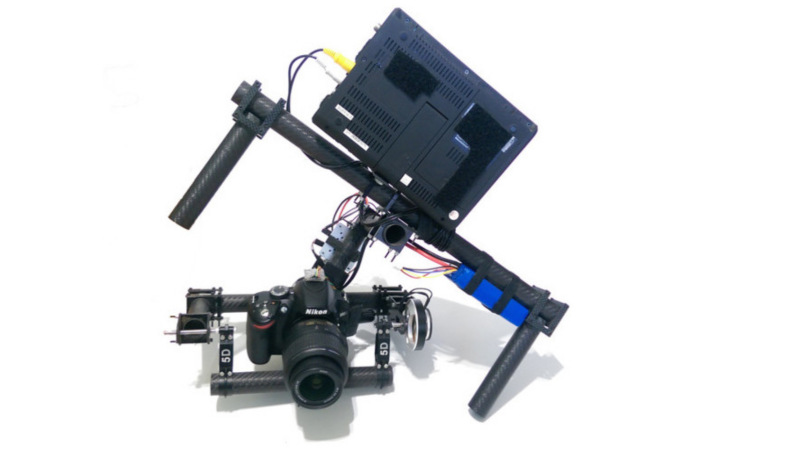We’ve featured quite a few camera gimbals and steady cams here, but this one stands out. For one, [Daniel Rhyoo] was in his sophomore year when he built it. His 2-axis camera gimbal uses brushless DC motors, and is made out of carbon fiber.
[Daniel] machined the carbon fiber parts on a CNC desktop mill and some hand tools. And he also had to teach himself Solid Works to design it. In his slick DIY guide, he starts off by listing the parts and where to source them from, along with the tools needed. Most gimbals use servos for axis movements, which limits the range and do not provide very smooth motion. Brushless motors overcome these limitations allowing a nice, smooth moving gimbal to be built with a wide range of movement. When [Aleksey Moskalenko] introduced the AlexMos brushless motor controller, [Daniel] ordered it out, and then waited until he could get his hands on the right kind of motors. CAD files for all of the machined parts are available for download (.zip file).
He then goes on to blog his build progress, with ample photos to describe the machining and assembly. He does a couple of nice design choices along the way – like using press-nuts to make assembly and dis-assembly easy, and dismantling one of the motors and replacing its shaft with a custom, longer one instead of using a coupler to extend it. At the end, the result is not only a nice looking, light weight rig, but one that works very well thanks to the motors and controller that he used. Check out the video below to see it in action.
















That is impressive.
Shame it is using a closed source controller board.
this is basically off the shelf and a common build for people flying multicopters with anything bigger than a gopro or doing cinema on the cheap, kits are available that produce products virtually indistinguishable from the above.
he did a nice writeup and made some very nice cad parts himself, kudos for that but design and product vise there is nothing new under the sun.
could you please give us links to products already available? hopefully something like this stabilizer under $1,000. thanks!
Ive seen a fairly decent looking 2-axis gimbal frame kit on Hobbyking for only $150!: http://www.hobbyking.com/hobbyking/store/__51495__Turnigy_PRO_Steady_Hand_Gimbal_2_Axis_KIT.html
and they sell all the controllers and brushless motors too for a very reasonable price!
Its impressive, I’m just not a huge fan of these kinds of stabilizers, to many mechanical parts, I like the weighted non-mechanical versions better. Sure can’t do fun and pointless wiggly stuff, but less points of failure.
Do you have an example of a non-mechanical version?
http://gotuasciencecenter.org/wp-content/uploads/2013/08/video-camera-stabilizer.jpg is a pretty good example
Wouldn’t it be easier to mount the cam on chicken’s head ?
LOL forgot about that technology… and it’s GREEN…
How sad that it’s not using an arduino!